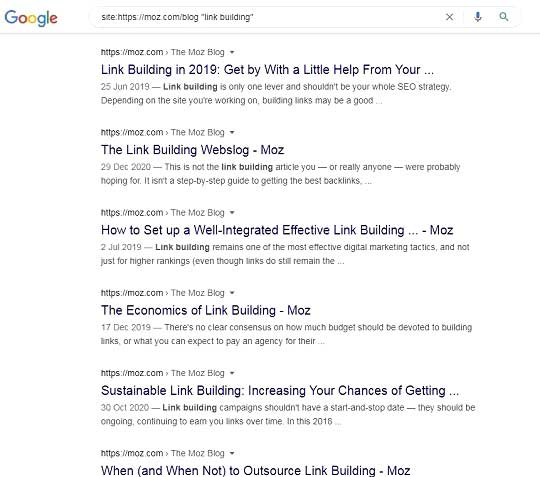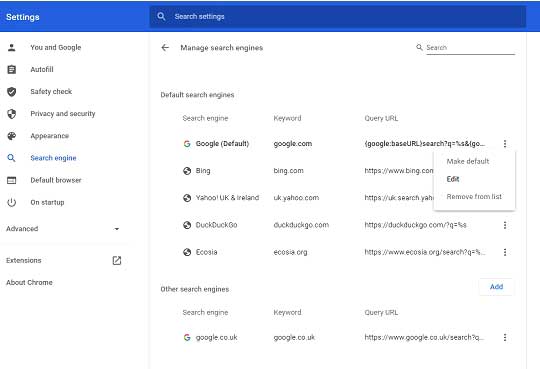Understanding How Google Search Works
Google is the most popular search engine in the world, with over 87% of the market share on desktop.
It was founded by Larry Page and Sergey Brin in September, 1996. Google's search engine is so popular because of its high-quality search, simplicity and ability to deliver fast and relevant results for all your queries.
The google engine can be accessed in different ways; by searching using a keyword or phrase; or by typing in an URL. You can also search through images, links to videos on YouTube as well as news, shopping and search results.

What Is "Search Google or Type a URL"?
There are quite a few different ways you can visit a website, using search engines (Google, Yahoo, Bing, etc.), typing the website's URL directly into the browser's address bar, from another website, from social media, etc.
But using a web browser, two of the commonest ways of loading a website is via the search bar or typing the URL into the address bar.
"Search Google or type a URL" are built-in search features used on most web browsers to allow the user to search for a particular term on Google or to specify what page (URL) they want to visit.
1. Searching Google
You can search Google using their search bar at the top of the page (or the search box lower down) or through a traditional browser search by typing a search term in the address bar. When you're searching Google, make sure to use your keywords and not slang or abbreviations.
The command "search google" is much more specific. This allows you to search for a specific word, and only returns sites that have that word. It will not return pages with similar names or content, so you are more likely to get the right result.
This search is better suited for users who want a list of relevant pages for their query, but may not be sure of the exact website(s) they want to visit. For example, somebody may just remember that they want to visit a site about dogs, but if they don't know the exact web address.
Site Search
A variation of this method is when you want to search for pages on a specific website. Although Google does an excellent job of displaying the most relevant content based on your search query, sometimes it may return millions of results.
Do you really want to spend your valuable time sifting through post after post? Sometimes you may want to find more specific page(s) on just one website. You can do this by using a custom site search.
This is where Google's site: search operator comes in. This internal website search command allows you to refine your query to one specific website, not the whole web. You can also filter your search even more, by honing into a certain topic on that website.
For instance, if you wanted to see only blog posts on moz.com, you could enter the following in the search box:
site:https://moz.com/blog
Or, if you wanted to find blog post content, only about the topic of link building, you could search for:
site:https://moz.com/blog "link building"
In this case, google will only show results that are strictly about link building.

2. Typing a URL
URL stands for "Uniform Resource Locator". It's the website address that you see in the address bar of your browser.
"Type a URL" is a search feature where you can do a URL search by entering a web address. If you want to visit the United Nations Children's Fund website, you would type: https://www.unicef.org.
When you know a website's exact URL address, use this command to be quickly directed to the page you just typed in.
When typing a URL into your browser, it's important to be careful. This website is completely harmless and is a great resource for children in need. But if you were to type the URL above into your browser without thinking, you could end up on a malicious site that may harm your computer or device.
"Search Google or Type a URL" using Google's Chrome Canary browser
Chrome Canary, an innovative version of their popular browser, is often used by Google to test out their latest ideas. Named after the legendary canary bird that helped save the lives of miners, by warning them of dangerous gases.
In the Chrome 36 version of Canary released in 2014, they decided to bury the full URL into the top-level domain name. So even if you navigated to the same site, it only displayed the site's name.
In Chrome's upper-left corner, what was commonly called the "address bar" was then renamed as the Omnibox; as users could either type a search term or input a URL into that box to get results from Google.
The difference now was that only the top-level domain was displayed in the Omnibox. Although, the full search URL could be shown by clicking the domain name (called the "origin chip" button).
The domain-only approach advantage was it simplified the web address and it created extra space for a sub-field on the right which allowed users to also "Search Google or type a URL".
This older version of Google Canary has now been superseded. The Canary update means the Omnibox now has a dual function, by allowing input of the full URL as well as acting as a user search bar.

Switching between Search Engines
Nearly every browser has a way to switch between Google and other search engines, such as Yahoo! and Ask Jeeves. You can also create custom search engines. The most common way of using this search engine feature is by changing the search settings at the top of your browser window.
1. You can access this from the vertical 3 dot ellipsis in the upper-right corner (right next to the search box)
Click More and then Settings.
Alternatively, type the following into the search bar:
chrome://settings/search
2. Under the "Search engine" section, you will find the "Manage search engines" option.
Using these search options you can select a new default search engine, or add your own personal search engines. In the following screenshot, you can see at the search engine settings.
Google Search FAQ
Question: Why won't the search engine give me any results?
Answer: Your probably missed one or two letters or some numbers. For example, "definitely" is misspelled as "definitly" and so on. Although Google does now account for many miss spellings. Just keep trying until you get it right.
Question: Google's search engine is not working for me. What can I do?
Answer: First, make sure you have the most current version of the Google Chrome browser on your computer and that it was up to date when you installed it. If this doesn't work, you'll have to call your network administrator and ask him/her to adjust their content filtering software so that the site can be searched through the web.
Question: Why can't I search google?
Answer: Google is blocked by certain networks, schools, corporate networks and the like. Therefore, if you can't find what you're looking for in Google, use a URL-based search instead.
Question: How do I search google on an iPhone?
Answer: If you have an iPhone, go to the App Store and download the Google app. This will allow you to search Google from your phone or tablet. It is not as efficient as searching through a computer, however, since many of the results are blocked for mobile devices.
Question: How do I search google on my Kindle?
Answer: If you have a Kindle and if it is connected to WIFI, open any book or click on the search bar. Type in your query and leave the search bar. Once you have done this, several options will appear on the left in a drop-down window. The results are not as specific as they would be through a computer, but they will give you what you are looking for.
Question: How do I search google on an iPad?
Answer: You will need the Google app for iPad. Once you have downloaded it, open the app and type in your query. There is not much difference between results searched this way and those found through a computer.
Question: How do you type a URL on a Mac?
Answer: You need Safari on your Mac. Go to Address Bar, click on a button and then type in the URL of the site you wish to search.
